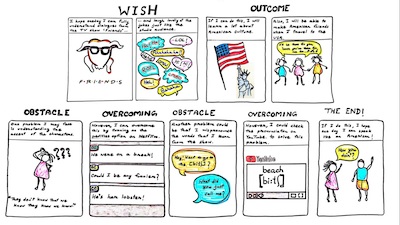|

Martiniano Etchart
|
|

Tamoha Siddiqui
|
Many factors related to individuals’ personalities and psychology play a very important role in the process of learning something new. When it comes to learning a second or a foreign language (henceforth, an L2), these elements influence the process of L2 acquisition differently, and in either positive or negative ways (see Teimouri et al., 2020). Some of these individual differences, such as motivation or anxiety, have been analyzed in depth from diverse perspectives. However, other factors have only recently begun to be investigated within the field of applied linguistics. This is the case of grit. Therefore, here we provide language teachers with an overview of this concept. We then share some suggestions of how teachers can foster grit in their own classes.
Definition of Grit
Duckworth et al. (2007) defined grit as “perseverance and passion for long-term goals” (p. 1087). They added that this “entails working strenuously toward challenges maintaining effort and interest over years despite failure, adversity, and plateaus in progress” (pp. 1087-1088). As a personality trait, grit does not stand alone; rather, it is in direct connection with other characteristics. For example, grit can help feed into an individuals’ motivation for success. In fact, grit has been conceived by the U.S. Department of Education (2013, as cited in Changlek & Palanukulwong, 2015) as one of the most important traits individuals need to be successful in the 21st Century. Thus, it is important that teachers consider grit in the L2-classroom context because the task of learning a new language is highly dependent on students’ hard work and effort over years (or decades) despite the challenges and obstacles the students face throughout the L2 learning process.
Past Work in Grit in TESOL
Grit has been analyzed in relation to applied linguistics only within the last ten years. Psychologists and educators have discussed how different personality traits influence L2 learning for a long time, but it took a few years for the issue of grit to start being studied within the field of L2 learning, and it mostly began when Duckworth and her colleagues first introduced the concept to the field in 2007. It was not until 2013 that Lake (cited in Teimouri et al., 2020) concluded based on research that grittier students had a greater passion for investing time and effort in learning a language. Similarly, Changlek and Palanukulwong (2015) discovered that grit was positively related to motivation and negatively related to anxiety among Thai learners of English. These researchers also noticed that college students who were high-achievers were grittier than low-achievers. Finally, Kramer et al. (2017) found positive correlations between learners’ levels of grittiness and their vocabulary learning and reading habits: higher levels of grit aligned with higher vocabulary gains and better reading habits. All of these studies confirmed that the concept of grit plays an important role when learning a language. However, some researchers found inconsistent or weak associations between L2 learners’ grit and language achievement. This might be a consequence of measuring students’ grit generally instead of measuring it in close relation to the language learning context, or it could indicate that in some contexts, L2 grit is good to have, but it is not fully responsible for gains: other factors may be more important than grit in certain learning contexts or situations. Thus, interesting pursuits are (a) teasing apart what grit does well for L2 learning; (b) figuring out at what points in one’s L2-learning progression grit is most important (at what ages, at what levels of proficiency); (c) coming to understand how grit is obtained; and, (d) most important for the language classroom showing how L2 grit can be sustained and fed by teachers.
New Work in Grit in TESOL
To look at grit, applied linguists and teachers need to know how to identify and measure it. By first developing and validating a L2-Grit scale, Teimouri et al. (2020) were able to measure students’ grittiness in an L2 setting. They argued that measuring personality traits with a tool designed specifically for the L2 context “will provide more accurate findings and pedagogical implications” in the future (p. 18). The researchers also showed that the grittier the students were, the more successful in language learning they became, which aligns with the discoveries made by scholars in the field of psychology, from whence the origin of the grit factor comes.
Awareness and knowledge about the value of grit in L2 is essential for both teachers and learners as “successful mastery of an L2 is highly dependent on L2 learners’ sustained effort and passion over a long period of time” (Teimouri et al., 2020, p. 1). Moreover, grit has been shown to be positively related to L2 learners’ ultimate language achievement while having an inverse relationship with anxiety. Because grit is a more tractable trait compared to other personality factors such as aptitude, motivation, and working memory, teachers can use some simple strategies to foster grit in the L2 classroom.
Recommendations for TESOL Teachers
One way to nurture grit is by helping learners set goals both for the course and for their future. According to Teimouri et al. (2020), gritty individuals not only set long-term goals, they persist in trying to achieve them, too. Therefore, students could be asked to write and edit sentences delineating their specific L2 goals in the form of “At the end of the course, I will be able to…” (see Figure 1) and revisiting the constructions throughout a course. Another way could be asking students to envision a future where they have become proficient speakers of the target language and write about it in detail. Students can be encouraged to revisit and revise these goals at regular intervals.
Figure 1. Setting gritty goals.

Note. Our idea for this activity was based on the writing by Keegan (2017, p. 8).
Another important aspect of nurturing grit is ingraining in learners a growth-oriented mindset as opposed to a fixed-skills mindset (Dweck, 2006, 2016, as cited in Temouri et al., 2020). This can be achieved by valuing students’ struggles and efforts in the classroom and encouraging risk-taking behavior. For instance, every week as homework, students could be asked to list two ways in which they are becoming better language learners. Additionally, the way teachers provide feedback can also signal to students that growth rather than ability is being valued. To help with growth-oriented feedback, teachers could tack Table 1’s information up on their wall to remind themselves to give feedback that promotes L2 grit.
Table 1. Teacher’s pledge to promote L2 grit through positive and specific feedback
|
I will avoid “Fixed Mindset Oriented Feedback.” |
I will use “Growth Mindset Oriented Feedback.” |
|
· You are good at learning vocabulary. |
· I can see you have worked really hard this semester to learn a lot of new vocabulary. |
|
· You don’t ask questions right. |
· You haven’t mastered question formations yet, but you’re getting there. |
|
· You’re a natural! |
· It looks like that was easy for you. Let’s find something more challenging. |
|
· You’re just not fluent during presentations. |
· It seems sometimes it is hard for you to think of what to say. Let’s see if jotting down notes on paper beforehand helps.” |
Note. Our idea for this teacher-pledge was based on writing by Keegan (2017, p. 6).
Lastly, in order to enhance their grittiness, students could be involved in long-term projects where they need to employ it. For example, students could be asked to develop journal portfolios or ongoing comic strips on the grit they are demonstrating in their language learning journeys. The students can learn about the popular psychology tactic “WOOP” (explained by Keegan, 2017, p. 7), which stands for wish, outcome, obstacle, and plan, to help with these assignments. These ideas are illustrated using a sample instruction for a comic-strip activity (see Figure 2) and a sample comic strip (see Figure 3).
Figure 2. Sample instructions for a comic strip task to build L2 grit.

Figure 3. Example of a sample comic strip provided to students for the completion of the Comic Strip Task in Figure 2.

Conclusion
Despite the exciting developments happening in the realm of grit and exploration in ways to develop it in the L2 classroom, the most important truth to remember is that grit cannot be manifested overnight. As Dr. Luke Plonsky stated, “Nobody should expect quick or easy gains. There's hard work involved…mistakes and challenges and even plateaus or regressions are all part of the process. So, to be successful, learners need to remember to stick with it and persist and set realistic expectations” (personal communication, October 5, 2020). Still, we hope that some of the suggestions, tools, and strategies shared in this article can be a starting point for teachers and learners on their long journey towards fostering grit.
References
Changlek, A., & Palanukulwong, T. (2015). Motivation and grit: Predictors of language learning achievement. Veridian E-Journal Silpakorn University Humanities, Social Sciences and Art, 8(4), 23–36. https://he02.tci-thaijo.org/index.php/Veridian-E-Journal/article/view/40089
Duckworth, A. L., Peterson, C., Matthews, M. D., & Kelly, D. R. (2007). Grit: Perseverance and passion for long-term goals. Journal of Personality and Social Psychology, 92(6), 1087–1101. https://doi.org/10.1037/0022-3514.92.6.1087
Keegan, K. (2017). Identifying and building grit in language learners. English Teaching Forum, 55(3), 2–9. https://files.eric.ed.gov/fulltext/EJ1156469.pdf
Kramer, B., McLean, S., & Shepherd Martin, E. S. (2017). Student grittiness: A pilot study investigating scholarly persistence in EFL classrooms. Journal of Osaka Jogakuin College, 47, 25–41. http://hdl.handle.net/10775/3498
Teimouri, Y., Plonsky, L., & Tabandeh, F. (2020). L2 grit: Passion and perseverance for second-language learning. Language Teaching Research. (Advanced online publication.) https://doi.org/10.1177/1362168820921895
Martiniano Etchart is originally from Buenos Aires, Argentina. He’s a second year MA student in the Spanish as a Second or Bilingual Language Program at Michigan State University.
Tamoha Siddiqui is a Fulbright Foreign Exchange Student from Bangladesh. She’s currently in her second year in the MA TESOL program at Michigan State University.
Photo credit for Tamoha Siddiqui is BRAC University. |

